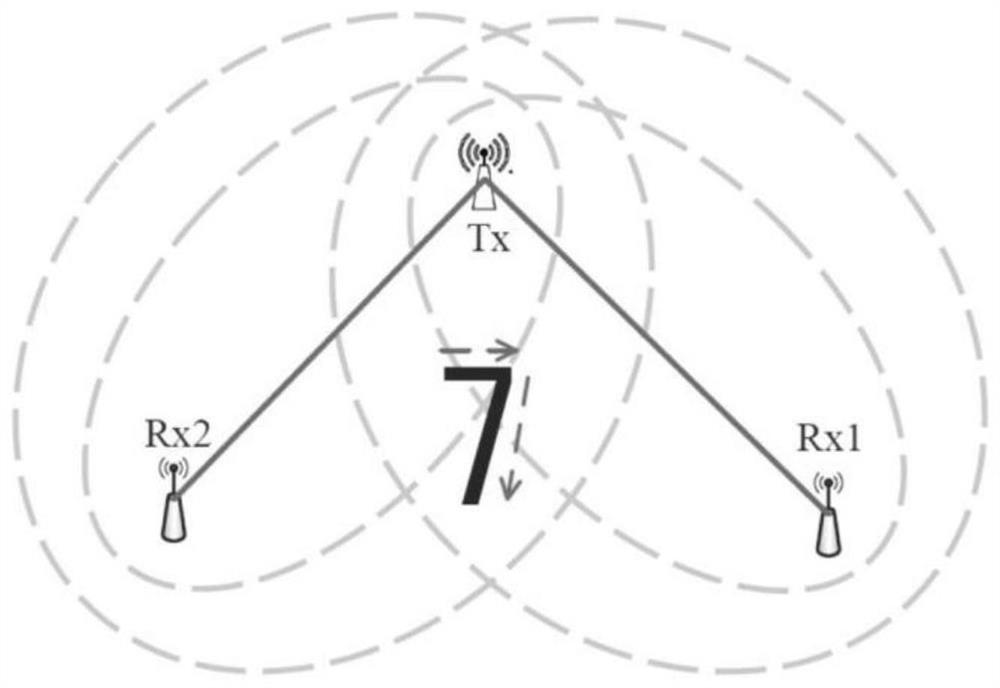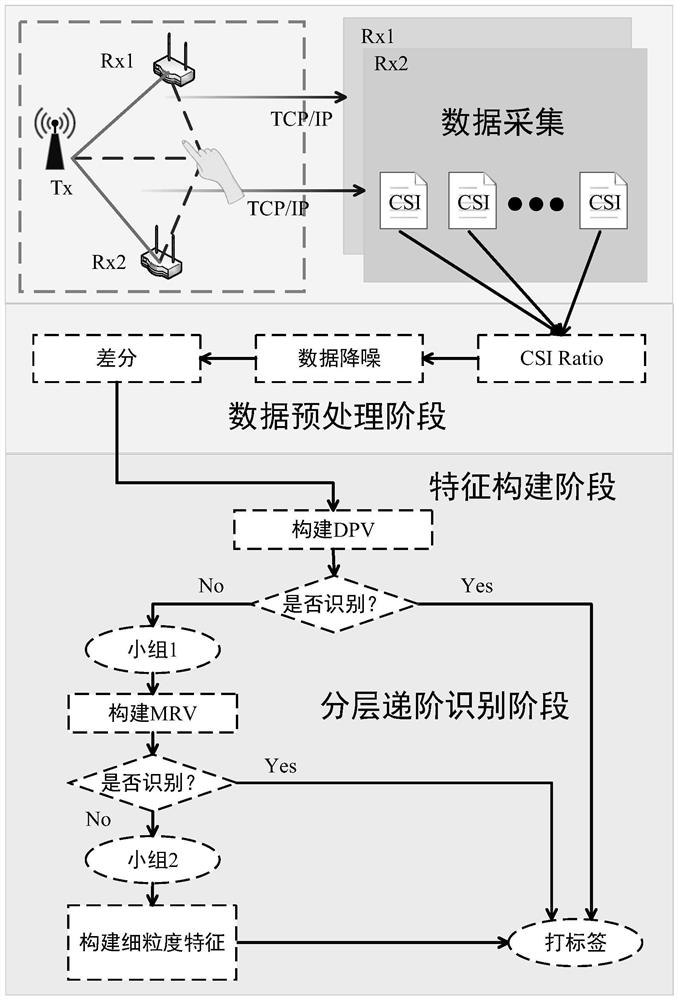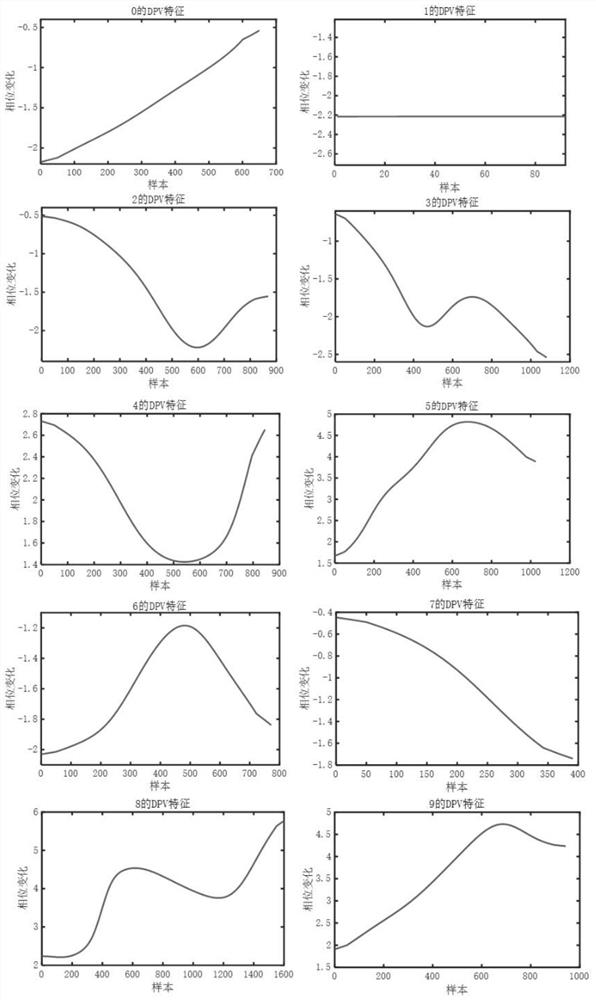A wireless signal-based gesture recognition method
A gesture recognition and signal technology, which is applied in the field of gesture recognition based on wireless signals, can solve the problems of increasing signal transceiver equipment, affecting the recognition rate, hindering the application of methods, etc., and achieves the effects of high accuracy, cost saving and wide application range
- Summary
- Abstract
- Description
- Claims
- Application Information
AI Technical Summary
Problems solved by technology
Method used
Image
Examples
specific Embodiment approach
[0055] 1) CSI acquisition
[0056] a) CSI is collected on two signal receiving devices Rx respectively, CSI data streams are collected on each Rx, and two sets of CSI data can be collected on the two signal receiving devices.
[0057] b) Generally, the CSI is measured once during each communication and transmission process of the device.
[0058] c) The antenna of each receiving device has its own corresponding CSI measurement value, and a CSI data stream is generated on each antenna.
[0059] 2) CSI alignment
[0060] a) The commercial network card will generate a timestamp during the process of collecting CSI, and the timestamp is generated by a counter containing an internal crystal oscillator, so the absolute value of the timestamp generated by different receiving devices is not the same. Interpolation is first used to form relative timestamps.
[0061] b) Find the starting positions of the relative timestamps on the two receiving ends, and align the CSI data streams of...
PUM
 Login to View More
Login to View More Abstract
Description
Claims
Application Information
 Login to View More
Login to View More - R&D
- Intellectual Property
- Life Sciences
- Materials
- Tech Scout
- Unparalleled Data Quality
- Higher Quality Content
- 60% Fewer Hallucinations
Browse by: Latest US Patents, China's latest patents, Technical Efficacy Thesaurus, Application Domain, Technology Topic, Popular Technical Reports.
© 2025 PatSnap. All rights reserved.Legal|Privacy policy|Modern Slavery Act Transparency Statement|Sitemap|About US| Contact US: help@patsnap.com



